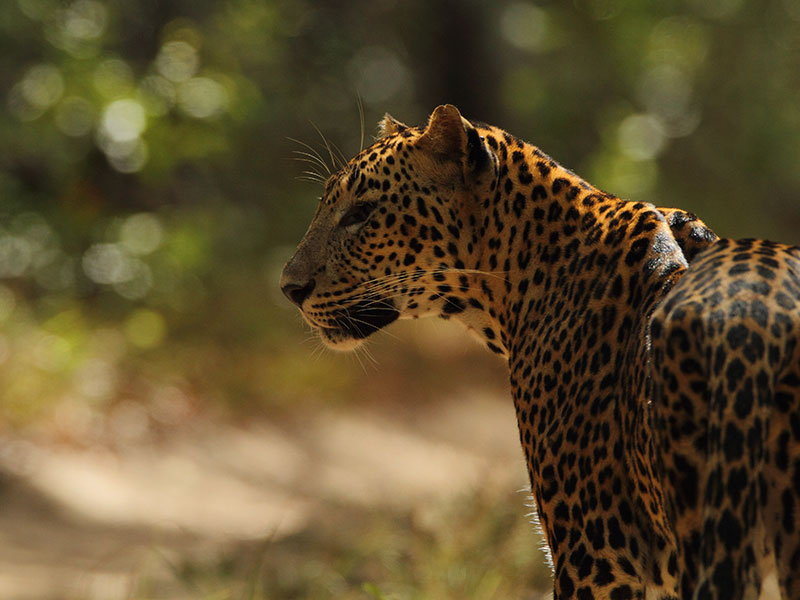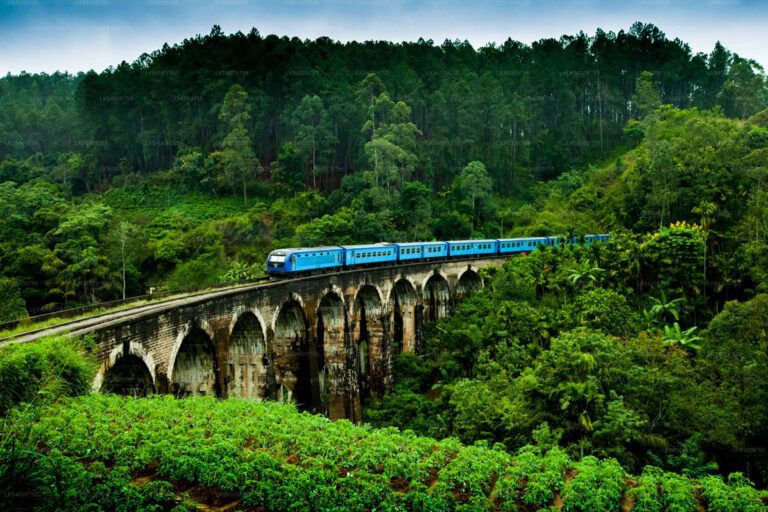Home of the Sri Lankan Leopard-Yala National Forest Park
At a distance of 304 km from Colombo,111 km from Ella, 247 km from Kandy, 283 km from Sigiriya, Yala is a national park located in the southeastern region of Sri Lanka. It is the most popular national park in Sri Lanka and among the must include places in Sri Lanka Tour Packages.
Extends over the Hambantota district of southern province and Monaragala district in Uva province, Yala is the second largest national park as well as the most visited national park in Sri Lanka due to its high density of leopards.

Ironically, the park was initially used as a hunting ground for the elite under British rule. Situated in Sri Lanka’s south-east hugging the panoramic Indian Ocean, Yala was designated a wildlife sanctuary in 1900 and was designated a national park in 1938. Yala combines a strict nature reserve with a national park.

Divided into 5 blocks, the park has a protected area of nearly 130,000 hectares of land consisting of light forests, scrubs, grasslands, tanks, and lagoons. Though Yala spreads over a vast area, only two of its designated blocks are open to the visitors while the remaining area is a strictly designated Natural Reserve. The rocky outcrops scattered over the park provide vantage points to enjoy the sprawling areas with Sri Lanka’s dry zone landscape. Still more, the southern border of the park being the south-eastern coast, the brackish lagoons and dunes enhances the distinctive charm of the Yala National Park.
The 2004 tsunami caused severe but localized damage to the park. Some 250 people in and around the park were consumed by the rampaging waves, also forever changing the land features of Yala’s coastal belt. A Tsunami memorial is constructed at Patanangala, reminding visitors of the devastation it caused and the lives it took. Visitors are allowed to get off at this point by the beach.
Yala is home to 44 varieties of mammal and 215 bird species. Among its more famous residents are the world’s biggest concentration of leopards, majestic elephants, sloth bears, sambars, jackals, spotted dear, peacocks, and crocodiles. Yala National Park is rich in birdlife and around 130 species have been recorded here. Besides, Situlpahuwa, Kataragama, Kebiliththa, and Buduruwagala are the other places to visit in and around Yala.
Yala National Park has four entry gates. Gates at Palatupana and Katagamuwa leading to Blocks 1 & 2 remain the most visited. However, the two Gates at Galge on Buttala-Kataragama Road, covering Blocks 3 & 5 are becoming known among visitors who do not want to contribute to congestion. There are reports of frequent sightings of leopards on these routes, too.
The Yala wildlife adventure seems to be incomplete without taking the awe-inspiring wildlife safari. The park authorities offered two types of jeeps to its visitors – half-day safari and full-day safari. There are two half-day jeep safari slots that you can choose from, the morning slot or the afternoon slot. The morning slot starts at 5:30 AM while the afternoon slot starts at 2:30 PM. Each safari lasts about 3 hours. The permits for day visits to the park are available online on Park’s website or one can book at the park’s ticket window.
Palatupana & Katagamuwa are closed from 1st September to 1st October every year while the Galge & Yala West Gates on Buttala-Kataragama Road which remain open 365 days. For the most reliable wildlife sightings, the best time to visit Yala is between February and July when the water levels of the park are quite low, bringing animals into the open.
Are you planning your trip through our agency Blue Elephant? Then we will provide you all facilities for Yala visit. Our experienced tour guides and drivers will take you to the right place. Finding the best time to visit Yala and an experienced safari jeep driver will be very important. We will definitely support you for that.
Things you should know before visiting Yala National Park
Yala National Park is the most visited and second largest national park in Sri Lanka. It is located in the south of Sri Lanka and is a popular destination for those hoping to spot a spotted leopard as it boasts one of the highest leopard densities in the world. That being said, there’s no guarantee – it is the wild, Yala is also often criticized for the sheer volume of jeeps roaming around the park every day. It is not an “intimate” wildlife safari experience. If you prefer a quieter safari drive in Sri Lanka you may want to consider one of the other national parks, Udawalawe, Gal Oya, Wilpattu or Minneriya and Kaudulla

The best time to visit Yala National Park
Yala is in a hot, semi-arid environment and temperatures range from 26-30 degrees Celsius (78-86 Fahrenheit) all year round, so it is possible to explore Yala throughout the seasons. Yala gets most of its rainfall from September to December and the park generally closes for the month of September and the first half of October The specific dates tend to shift each year so stay tuned to the blue elephant tours .
If you are visiting southern Sri Lanka during this time and want to go on a wildlife safari, don’t fret! Udawalawe National Park is still open when Yala is shut. Click here to read my destination guide to visiting Udawalawe National Park! There are several Yala safari tour options: most people opt for a half day morning or evening tour, longer 7 hour morning or afternoon tours, or a full day tour from 6 AM to 6 PM. If you’re hoping to spot a leopard, your best bet is to go on a morning tour. Per the official Yala National Park website: “Keep In mind that the best time to enter the park is when the park opens just after 6:00 am or after 4:00 pm when animals resurface after taking cover from the sun.
How to get to Yala National Park
You can either do a day trip to Yala or stay overnight. If you plan to do a day trip to Yala, your best bet is to stay in the Southern Province. The southern coast of Sri Lanka has beautiful stretches of beach and you have meny of options for places to stay. We are ready to plan your trip by coordinating all this. You should choose Blue Elephant for your tour because our staff are experienced and friendly. It will make you more comfortable throughout the trip.

What to expect from a wildlife safari in Yala National Park
Once you get to the park, you’ll be driven to the ticket office where your driver will need to queue up and pick up everyone’s tickets. The ticket office is often busy so you might find yourself sitting and waiting in the jeep for 15-30 minutes. This is also where you will pick up your local spotter, who is tasked with keeping an eye out for all types of animals – birds, reptiles, mongoose, elephants and even crocodiles.
The drive through the massive park can be bumpy and rough, and roads can be fairly narrow with trees and lots of vegetation on either side of the path – if you have been on safaris in areas with wide open plains like in South Africa then this may feel a little different. Because the paths are relatively narrow, there can also often be severe “traffic” in the park, especially if an animal has been spotted. There’s no doubt about it – Yala National Park is probably the most crowded and popular national park in Sri Lanka, which means it is not uncommon to spot dozens upon dozens of jeeps in the same area at any given time.
On one of our safaris, a jeep from another safari company approached a huge elephant with tusks, which was extremely scary: the elephant inserted its tusks through the open sides of the jeep, pulled out a handbag and bottled water, and began to trample it. with enthusiasm The young mother was clinging to the other side of the jeep and holding her child. Luckily the elephant lost interest and the jeep drove off relatively unscathed. More and more incidents like this are happening because people continue to mistreat animals. This is an example of why it is extremely important to go with a company that adheres to park regulations and keeps a safe distance from animals.


